Well, you’ve been wondering where have the elves been all December without a single post? The elves have been busy, really busy, really really busy, burning the midnight oil, being overworked by Satan Santa to pack all the gifts for all the kids in the whole world. Only the end of the Christmas and New Year has given them sometime to cool off, and finally breathe.
So they are back in business, or maybe they are outsourcing this one time, read on to know…….
Yes, you read the title right, this post will enlighten you to the path of making your very own strawberry jam. But wait, when did this blog start posting recipes? Fret not, it’s very likely a one-time thing, and is a guest post from another blogger. [Also some would argue that this falls under the eating part of the E in elft but screw logic]. That blogger would like to thank the owners elves? of the original blog to let him/her post here.
Now that we’re done with all the social niceties, let’s focus!
Q1. You can make strawberry jam at home? Absolutely. No question. Easier done than said. Although it does require you to gather a few ingredients and wait for a few hours and sometimes be patient and wash a lot of dishes, be BRAVE reader.
Q2. Why should you make it home?
- Ghar ka khaana acha hota hai (Home cooked food is the best). Self-explanatory but for the uninitiated on Indian culture it’s a clichéd quote used by parents to keep their children in check.
- It helps your ego, trust me on this. If you can get it right then you can put a 100 hashtags and post this on social platforms [just an idea, not a necessity].
- Science Stuff: Without delving too much into it, jam makers usually deoxygenate the strawberries [aseptic storage] so that it doesn’t rot and can go for a year, eliminating the issue of strawberry supply. This, however, also strips the fruit of its natural flavour and fragrance. Thus these same companies then hire perfume and fragrance companies to make it smell and taste fresh. If you like eating perfume then cool.
- Pectin: Essential ingredient, industrial grade, non-organic. Nuff said.
- Sugar content: Companies put too much sugar, but here you can control that, be happy control freak.
If you’re still not convinced by my very sane arguments, and don’t want to cook, but still want a good jam, I’d recommend St. Dalfour (real jam) and Hero (lesser of all evils) brands.
Ingredients you’ll need to work a little hard for:
- 2 glass jars with lid
- 1 kg strawberries [ask the vendor who sells it to measure it for you]
- Granulated Sugar [depending upon taste]
- Salt, just a pinch
- 1 lemon with a really good outer skin
Note: As with most recipes you can half or double or triple or quadruple or.. the ingredients mentioned above, just keep the ratios roughly in check to avoid disasters.
Prepping:
- Wash the jars with soap and let them dry.
- Take a clean glass/steel container[non-reactive container] that can house a kg of strawberries and set it aside to dry.
- Take these strawberries, wash them thoroughly as these generally tend to be really dirty and no surprise, let them dry.
Selection Process:
Take the strawberries and cut away with the green stems or pull them apart. Remove parts that you feel are rotten or don’t look right. We only want the best freshest strawberries going into the jar, as they’ll be in the fridge for a long time and you want them to last as long as possible. Cut these strawberries into small pieces [dicing], roughly 4-6 pieces of a single strawberry.
The actual weight of the strawberries would now be reduced to around 800 grams after the cutting and chopping. I usually use a measuring scale [obsessive] to get it perfectly right, but generally you can go away with 75-80% of the original weight.
Maceration:
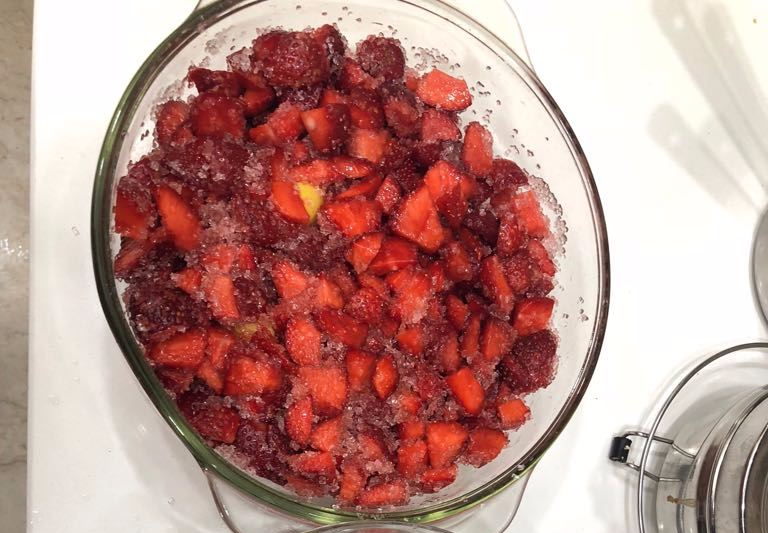
Pre-Maceration: Notice how the strawberries have cut. That yellow part is the cut lemon we added.
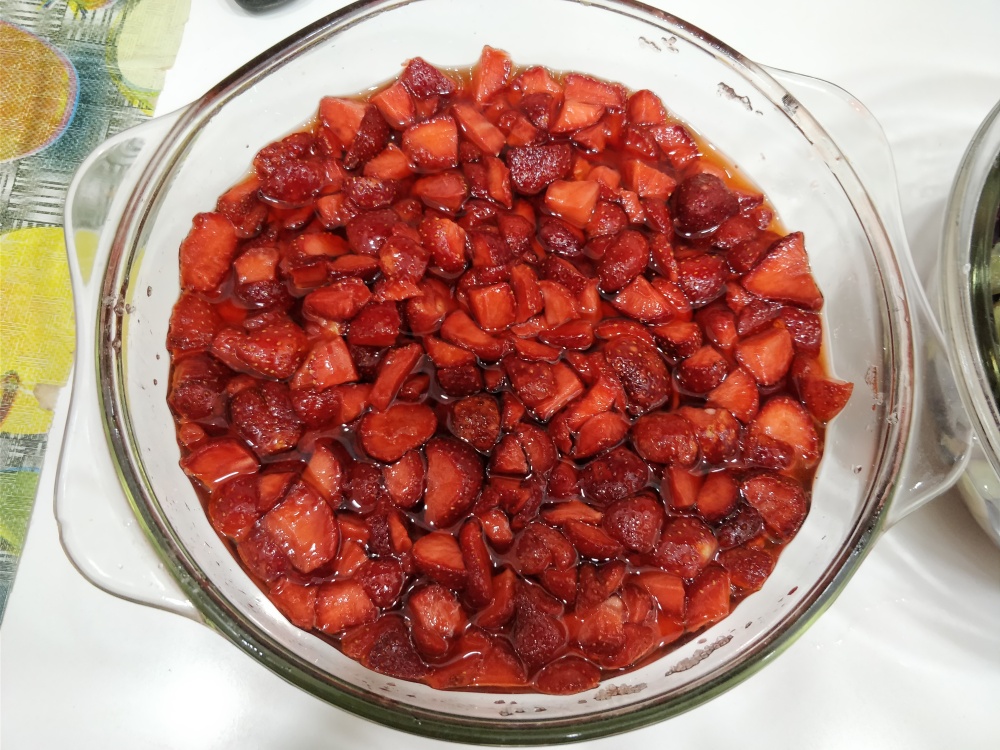
Post Maceration: All the strawberry juice released
Toss these ‘berries in that non-reactive container we procured.
Now comes the hardest part. How much sugar do you put? The general convention is 50-75% of the weight of strawberries. I myself used 42%[why? Hints later].
- The more the sugar the sweeter it is, obviously.
- The more the sugar the longer the
shelffridge life. - For starters I’d recommend going around 60% and as you get the hang of it, change accordingly.
After you’ve decided on the amount of sugar you want to put, throw it over the strawberries, that is 480g(here in this case), roughly half a kg of sugar.
Squeeze the juice of 1 lemon (1 lemon for every 800g of strawberries), in the same container, deseed the same lemons, cut them into 4 pieces each, and drop them it too.
Add a pinch of salt. Mix well.
Cover it with a plate and let it sit for around 4-6 hours, maximum 8. Mix it around every hour or two. This process is called maceration and is the difference between a good jam and a great jam. The French do this is the the only justification I’ll put.
Stovetop Time:
After the maceration, you’ll notice the sugar has released all the water from the strawberries. Good job! The end is near my friend.
More prepping before you actually do the main part:
- Take a pot of water and add the jar containers(along with their lids, skip if the lids are plastic) and sterilize it. After giving them a rolling boil, turn off the heat and after they’ve cooled a bit, let them dry.
- Take 3-4 steel/porcelain plates and pop them in the freezer before cooking the jam.
- Remember that you put 4 pieces of lemon in your jam, find them and discard. reactive pot].
The main part:
Note: It is okay if there are some sugar granules set undissolved at the bottom post maceration.
Please see the photos below for visual representation of the same.
- Transfer the strawberry mix into your non-reactive aluminium kadhai [non-reactive pot]
- Begin with a low heat, and then then gently turn it to medium. Move the mixture around so that it doesn’t stick to the edges. There is no rule to it, and you have to trust your gut with this, you can regulate the frame as you fancy.
- After a while on medium flame, you’ll notice the mixture boiling, then you can turn it to high heat. You might notice foam rising at the top of the mixture, fret not, you’re doing it right. Just ignore it!
- When the syrup is the consistency of warm maple syrup – it will take about 10 to 15 minutes or so, maybe more, depending on the pot and berries, turn off the heat and put a spoonful of the jam on the frozen plate and return the plate to the freezer.
- Check it in a few minutes; if it wrinkles when you nudge it, it’s done. If not, return the plate to the freezer and cook the jam a little more, testing it again. It may take a few times before you get it to the right consistency. Do it in like 5 minute intervals.
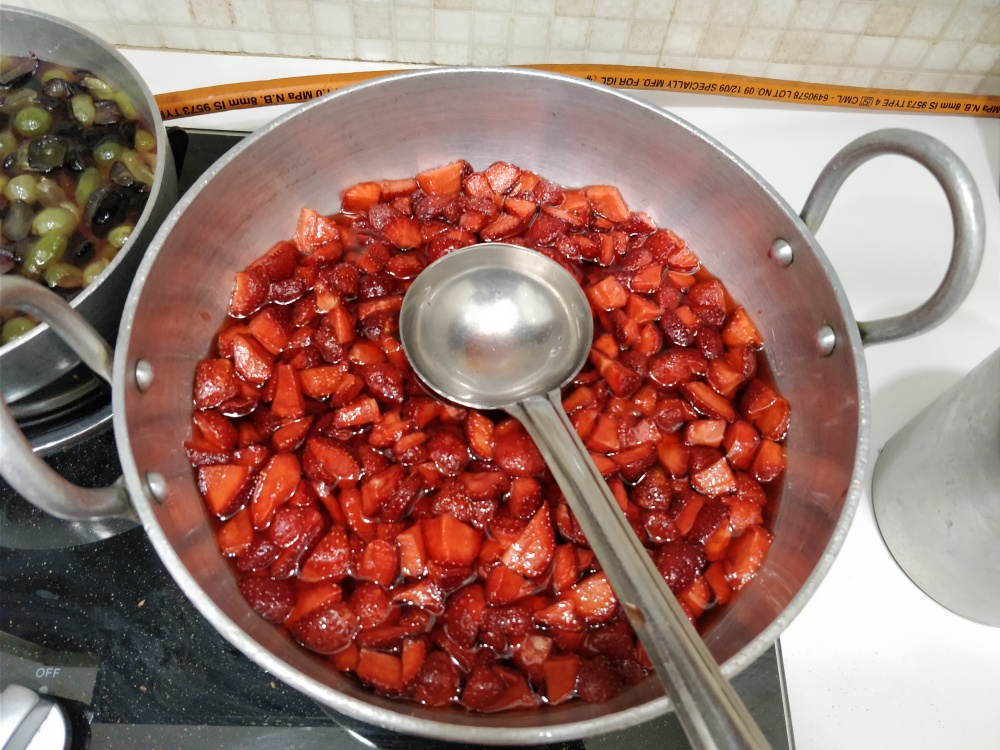
Low heat
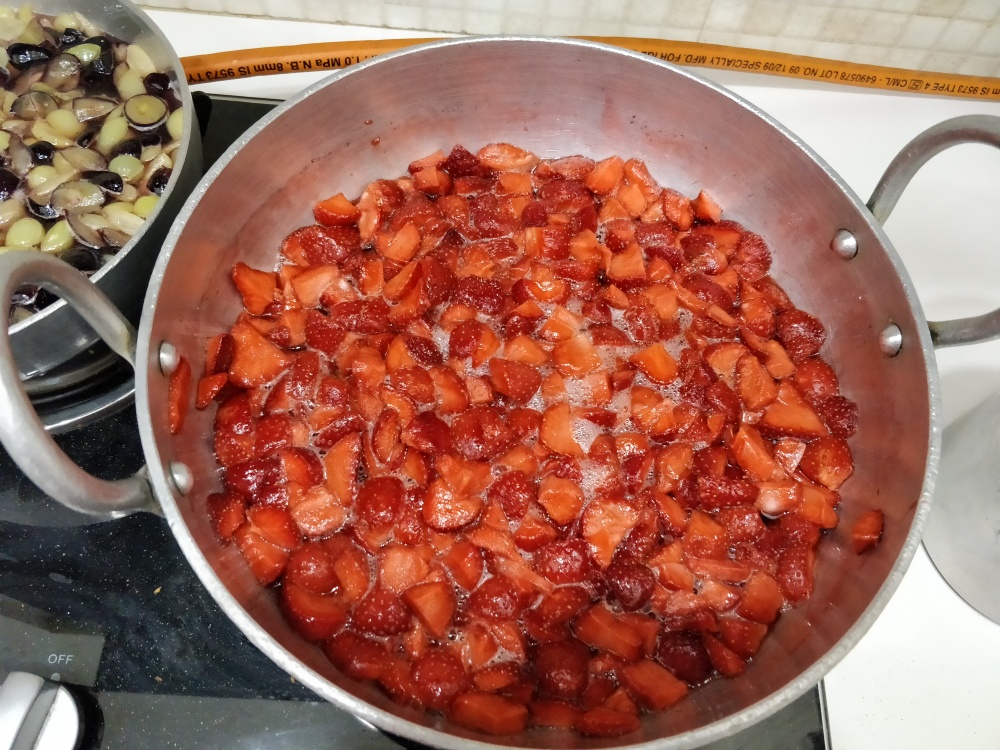
On medium heat
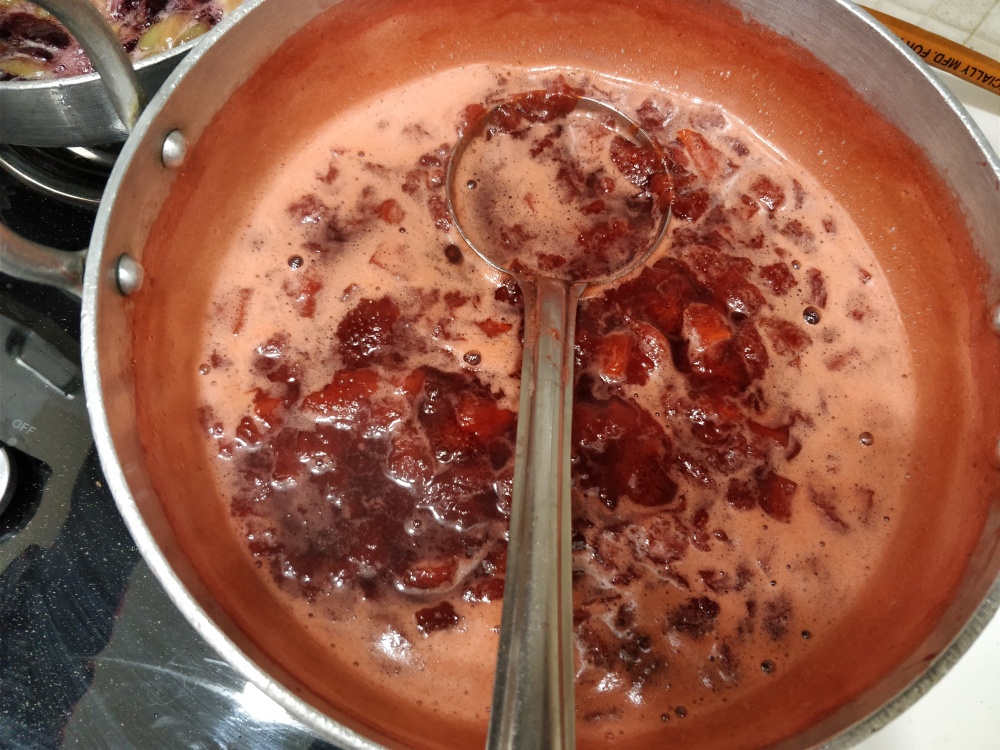
Time to turn the heat to high. Also the foam that I mentioned
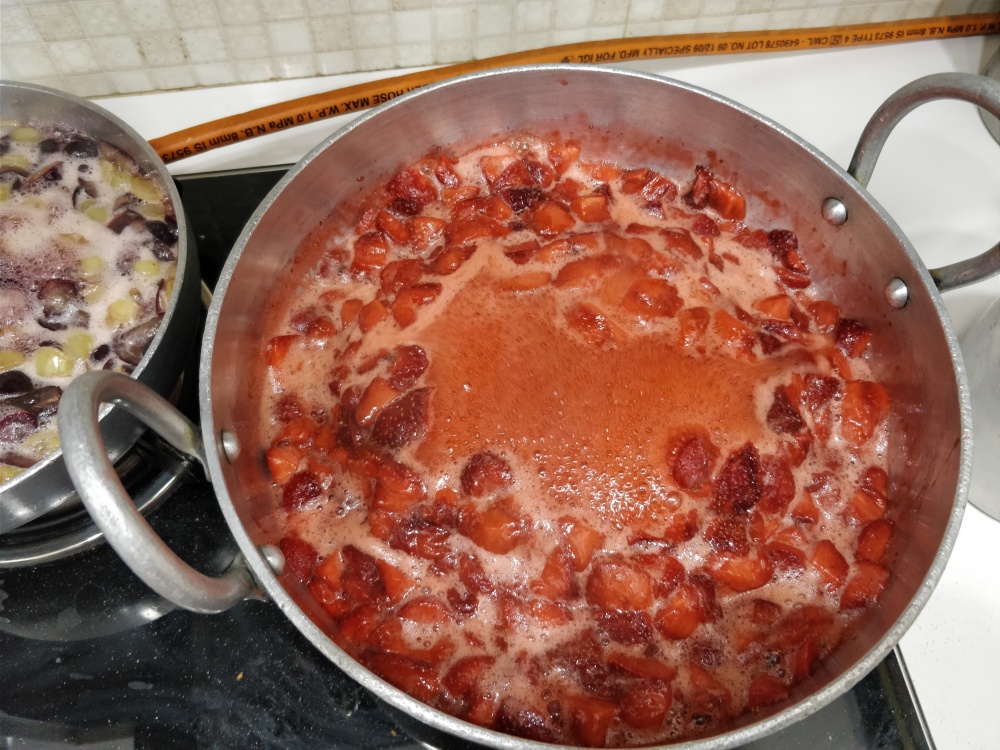
Rolling boil
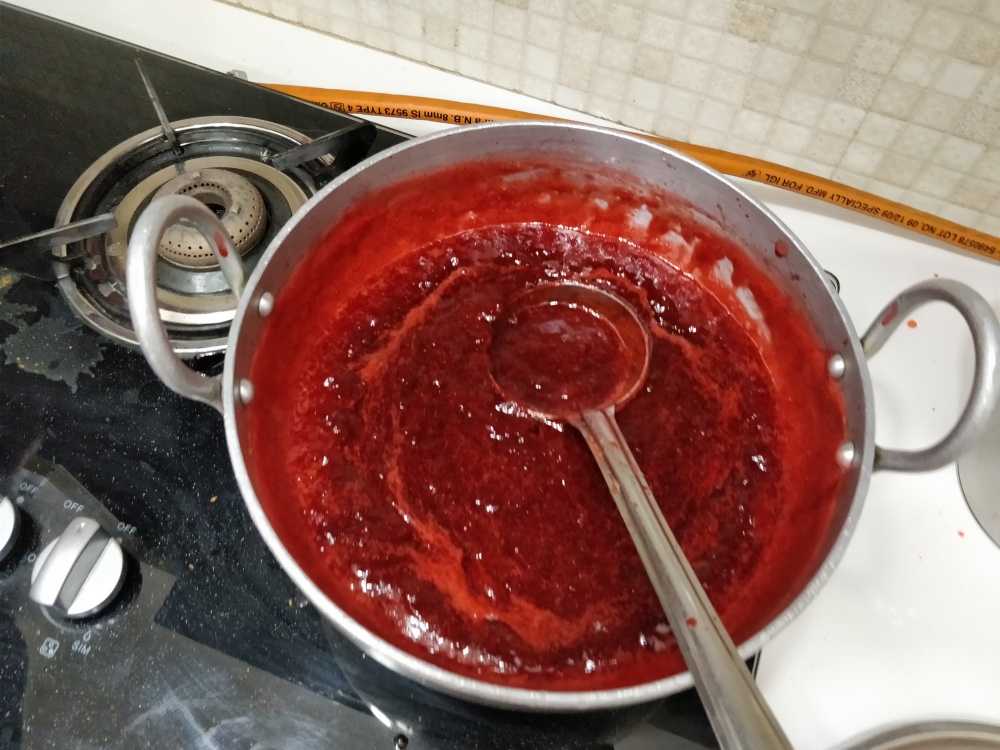
Final result
Canning/Finishing:
- Take those sterilised jars, and ladle the mixture in, be a little cautious as you don’t want to burn yourself. Fill them almost to the top, half filled jars are okay too [ask one of the elves, she got one half-filled as a gift from me :P]
- Invert a spoon[handle of the spoon downwards] and swirl it around inside so that no air bubbles remain. Tightly close the lid. Please don’t burn yourself, be careful.
- I generally prefer to divide my jams into 2 containers, so that I keep eating from one and the other is sealed and unopened/unharmed.
- The jars will be very hot, let them sit overnight, and when they are room temperature, clean the jars from the outside, thank god and refrigerate.
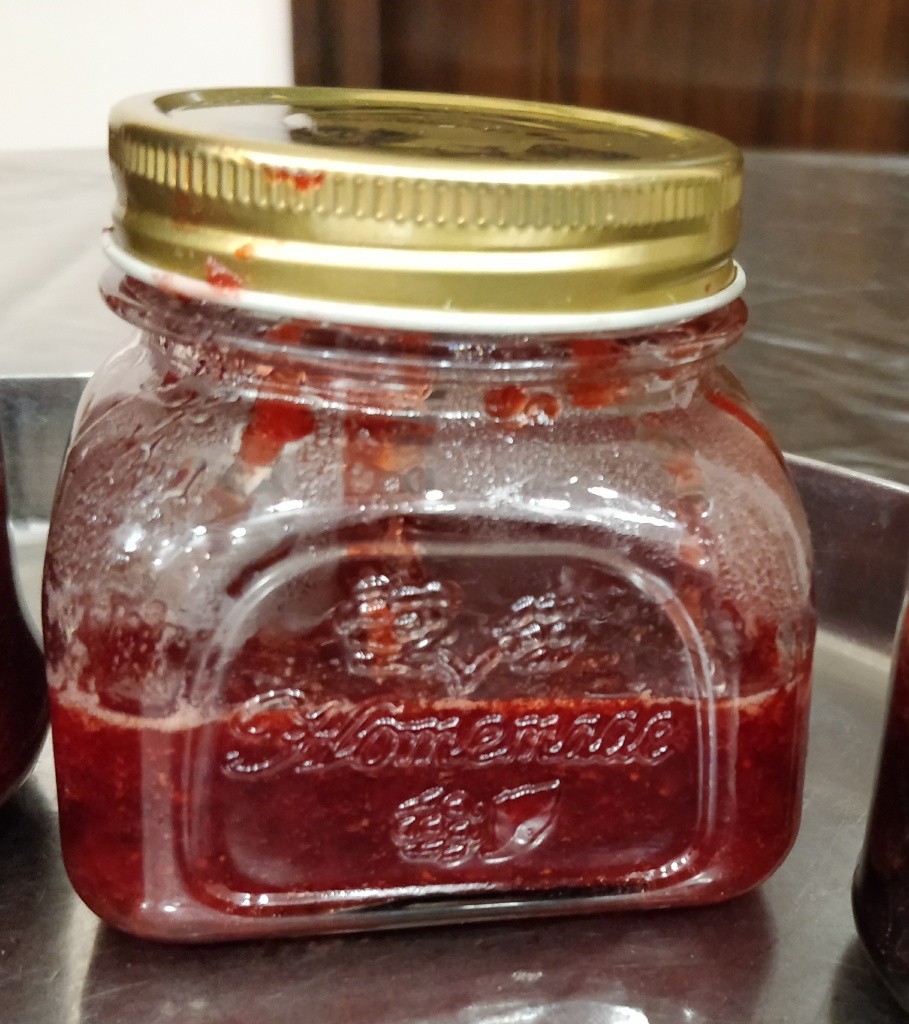
Output
Necessary Unnecessary Information
Have it on bread, pancakes, on cakes or à la carte.
The jams usually last a long time, if you use a clean spoon, but prefer it to eat in the first month or two. I have made this 5-6 times, and have never had a jam go bad [sorry fungi my little furry friend], and the one I made in June, still tastes fine after 6 months.
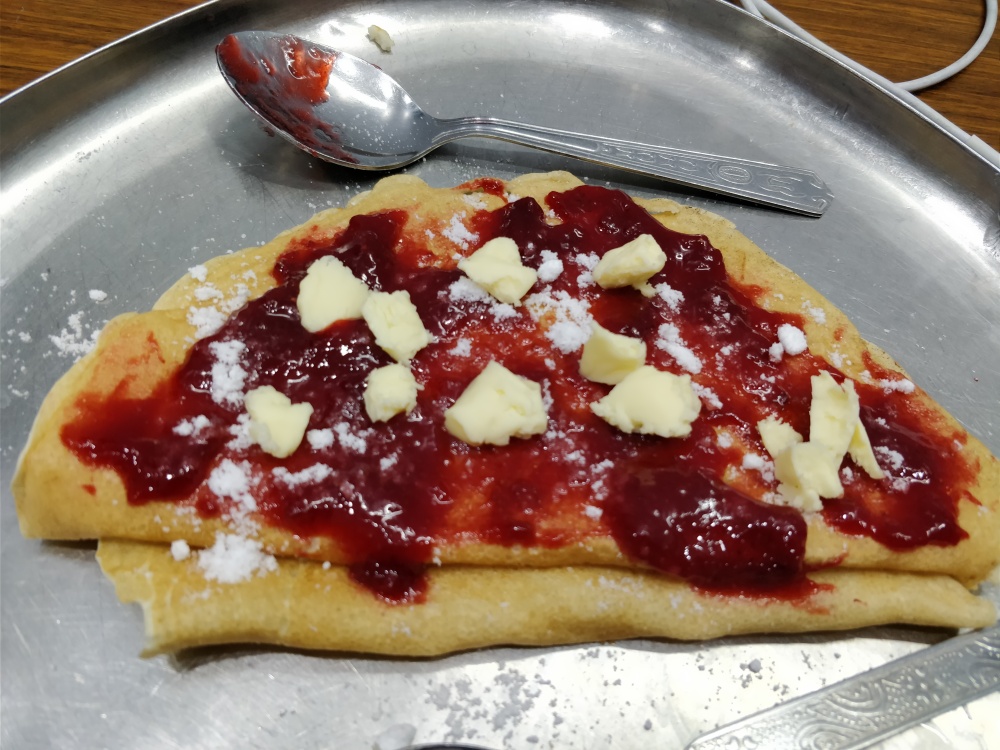
Same spread on a crepe.
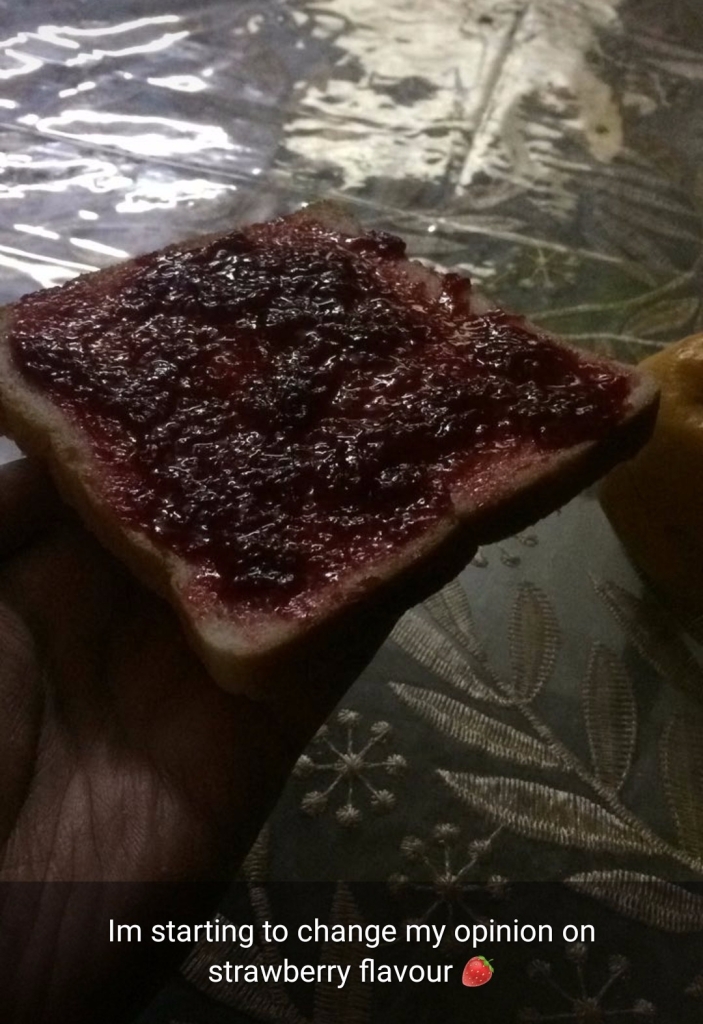
Review from one of the elf
Bon Appétit.
PS The blogger would like to remain anonymous, but before he leaves he’d like to drop in some knowledge, a quote per say, “The answer to our life, the universe and everything is 42”.
PPS Almost forgot, do comment if you find any typos/mistakes anywhere(Grammar Nazi’s its your time to feel alive) and also let us know about your feelings about this post and anything irrelevant to this post.